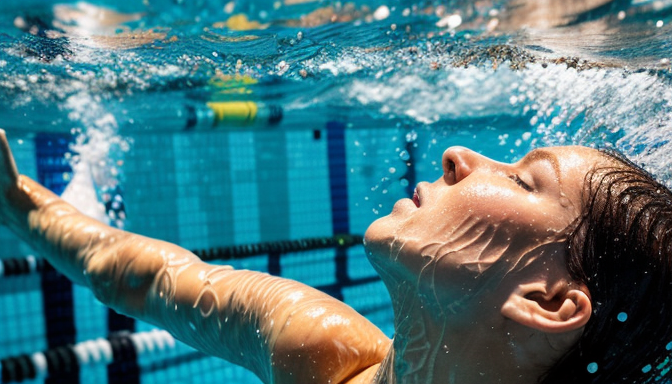Ready to dive deeper into the world of swimming? Whether you’re a seasoned swimmer or just looking to refine your skills, mastering the four main strokes—freestyle, backstroke, breaststroke, and butterfly—can elevate your performance to new heights. Each stroke has its own unique mechanics and challenges, but fear not! With the right techniques and a little practice, you can swim like a pro.
Let’s start with freestyle, the fastest and most efficient stroke. Focusing on your body position is key; keep your body flat and streamlined to minimize drag. A common mistake is lifting the head too high, which can disrupt your alignment. Instead, keep your gaze down and your hips up to glide through the water smoothly.
Next up is the backstroke. It may seem easy since you’re on your back, but don’t let that fool you! The trick is to maintain a steady rhythm with your arms and legs while keeping your core engaged. Remember, your arms should enter the water pinky-first to reduce resistance.
When it comes to the breaststroke, timing is everything. The pull, breathe, kick, and glide sequence must be executed flawlessly to maximize your speed. Think of it as a dance; each movement must flow into the next for optimal efficiency.
Finally, we have the butterfly. This stroke is often considered the most challenging due to its demanding coordination. Focus on a strong kick from your hips and ensure your arms move in a fluid motion. Remember, practice makes perfect, so don’t get discouraged!
In summary, mastering these strokes requires dedication and understanding of their mechanics. With consistent practice and attention to detail, you’ll not only improve your efficiency but also enjoy the exhilarating feeling of gliding through the water like never before.
Mastering Stroke Mechanics
Understanding the intricacies of stroke mechanics is crucial for advanced swimmers. Whether you’re a novice or a seasoned athlete, mastering the four main strokes—freestyle, backstroke, breaststroke, and butterfly—can dramatically enhance your performance. It’s like learning to play an instrument; the better your technique, the more beautiful the music you create in the water.
Let’s break down each stroke. For freestyle, focus on a streamlined body position and efficient arm movements. Imagine slicing through the water like a knife through butter; this minimizes drag and maximizes speed. In contrast, the backstroke requires a balance of rotation and arm strength. Think of it as a dance, where your body gracefully turns while your arms pull you forward. Are you feeling the rhythm yet?
When it comes to breaststroke, timing is everything. Your arms and legs should work in harmony, almost like a synchronized swimming routine. This stroke is all about patience and power; rushing can lead to inefficiency. Lastly, the butterfly stroke demands a strong core and explosive power. Picture a dolphin gliding through the ocean—smooth and powerful. To master these strokes, consider practicing drills that isolate specific movements, allowing you to hone your technique.
Incorporating these advanced techniques into your training can elevate your swimming game. Remember, it’s not just about speed; it’s about mastering the art of swimming. So, are you ready to dive deeper into the world of stroke mechanics?

Breathing Techniques for Efficiency
When it comes to swimming, breathing is often overlooked, yet it plays a pivotal role in your performance. Mastering the art of breathing can be the difference between gliding effortlessly through the water and gasping for air. Imagine trying to run a marathon while holding your breath—ridiculous, right? The same principle applies to swimming! Efficient breathing techniques are essential for maintaining stamina and speed.
One of the most effective methods is the bilateral breathing technique. This approach not only helps to keep your stroke balanced but also allows you to breathe on both sides, which can be a game-changer during competitions. By alternating your breathing, you reduce the risk of straining one side of your body. Think of it as tuning a musical instrument; both sides need to be in harmony for the best performance.
Another important technique is the exhalation underwater. Many swimmers hold their breath, but the key is to exhale continuously while your head is submerged. This practice not only prepares your body for the next inhale but also helps maintain a streamlined position, reducing drag. Remember: the more relaxed you are, the more efficient your strokes will be.
To sum it up, mastering breathing techniques can elevate your swimming game to new heights. Practice these methods consistently, and soon enough, you’ll find yourself swimming like a dolphin—efficiently and effortlessly. So, are you ready to take a deep breath and dive in?
Frequently Asked Questions
- What are advanced swimming techniques?
Advanced swimming techniques go beyond basic strokes and focus on optimizing performance. This includes mastering stroke mechanics, improving breathing efficiency, and enhancing overall speed and endurance in the water.
- How can I improve my stroke mechanics?
Improving stroke mechanics involves analyzing your technique and making adjustments to enhance propulsion while reducing drag. Consider working with a coach or using video analysis to identify areas for improvement.
- What breathing techniques should I practice?
Effective breathing techniques include bilateral breathing, rhythmic breathing, and using quick exhales. These methods help maintain a steady pace and comfort while swimming, allowing you to focus on your performance.
- Can advanced techniques help beginners?
While advanced techniques are primarily for experienced swimmers, beginners can benefit from understanding the fundamentals of stroke mechanics and breathing early on. This foundation can set them up for future success as they progress.
- How often should I practice these techniques?
Consistency is key! Aim to practice advanced techniques at least 2-3 times a week, integrating them into your regular training sessions to see significant improvements over time.